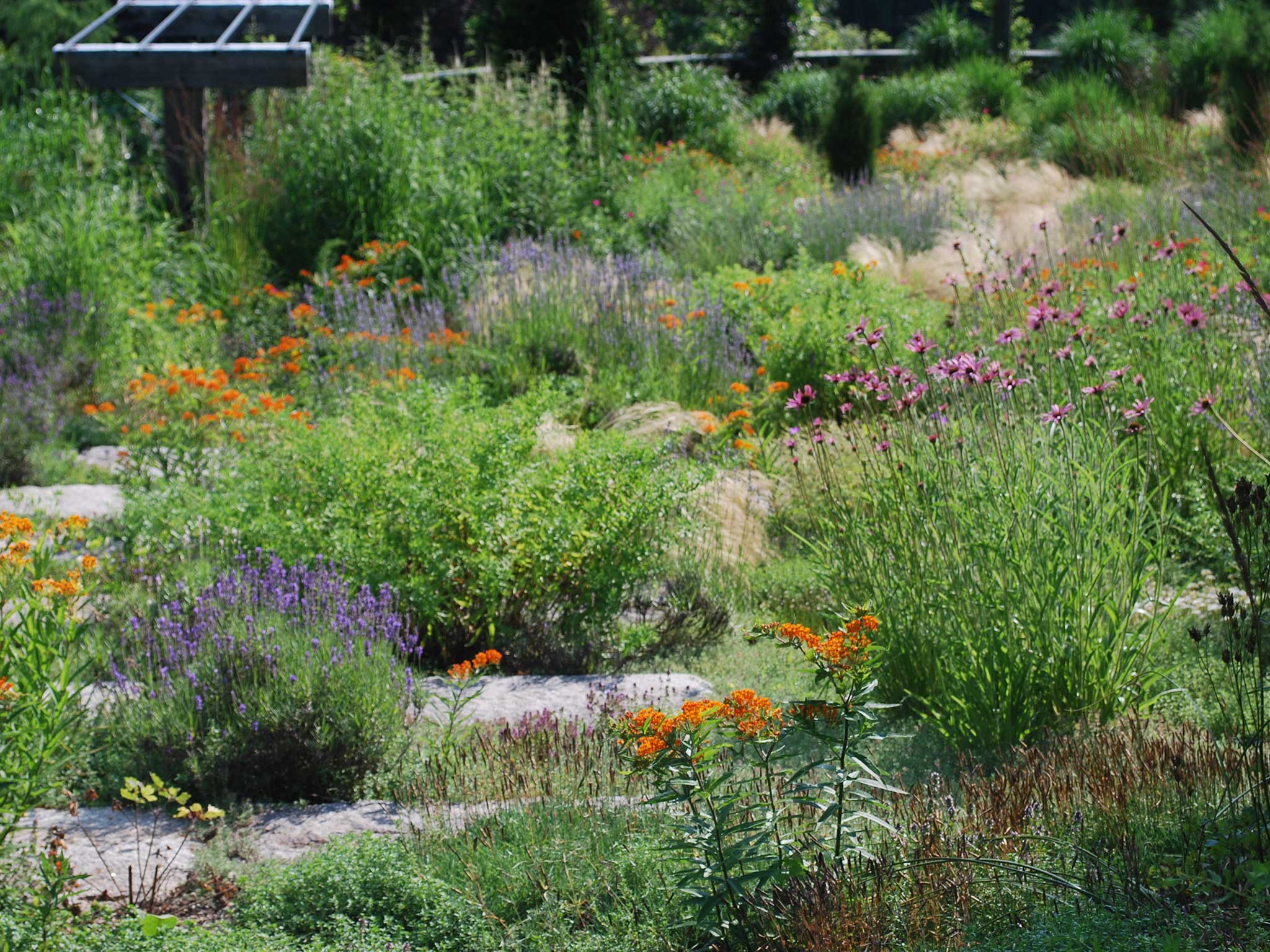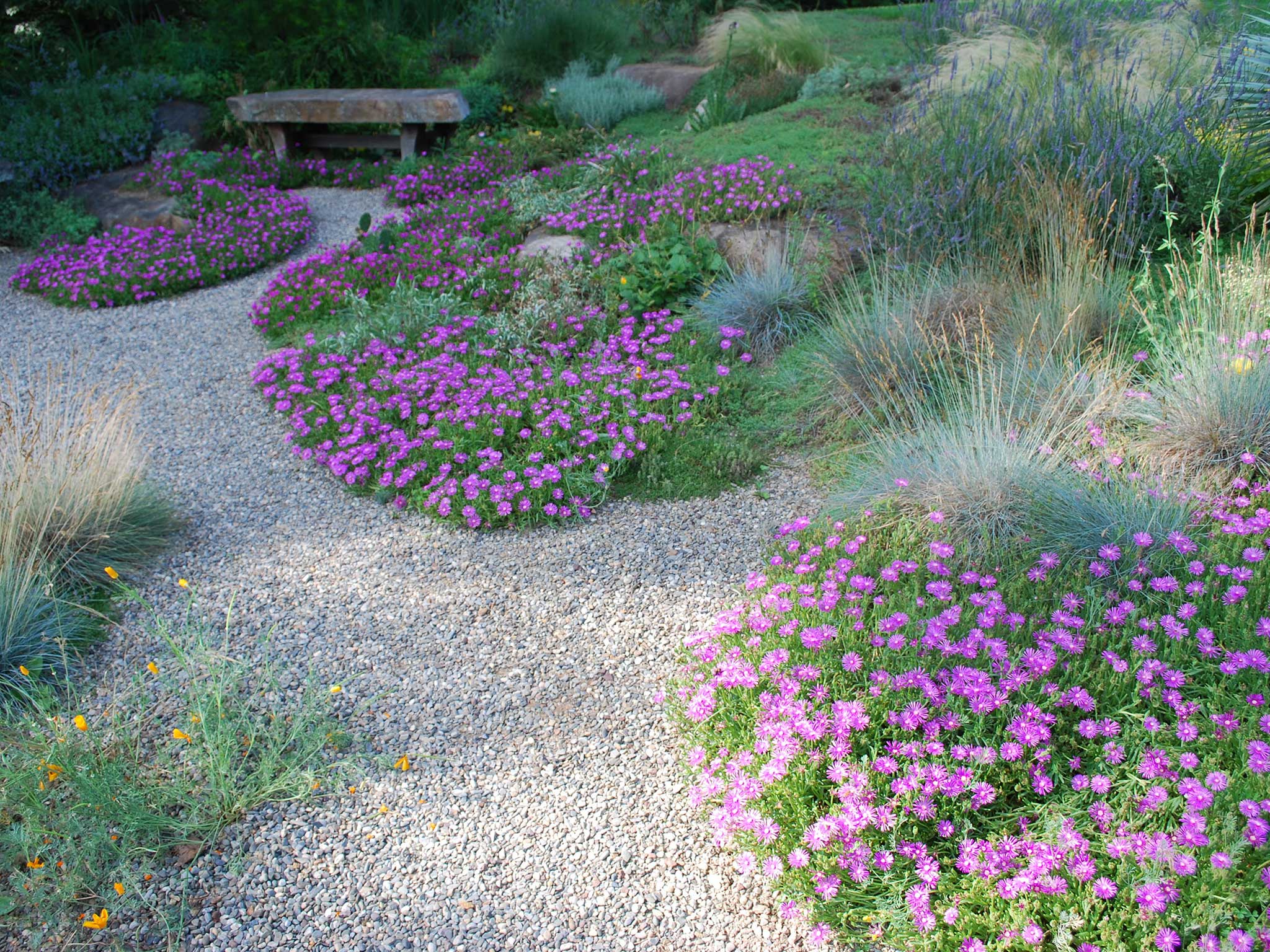Rock on gardens
If your garden is due for a rock revival, gravel would be the way to go, suggests Adrian Higgins

Your support helps us to tell the story
From reproductive rights to climate change to Big Tech, The Independent is on the ground when the story is developing. Whether it's investigating the financials of Elon Musk's pro-Trump PAC or producing our latest documentary, 'The A Word', which shines a light on the American women fighting for reproductive rights, we know how important it is to parse out the facts from the messaging.
At such a critical moment in US history, we need reporters on the ground. Your donation allows us to keep sending journalists to speak to both sides of the story.
The Independent is trusted by Americans across the entire political spectrum. And unlike many other quality news outlets, we choose not to lock Americans out of our reporting and analysis with paywalls. We believe quality journalism should be available to everyone, paid for by those who can afford it.
Your support makes all the difference.A gardener raises plants for their beauty, a botanist studies them for their biology, but in anyone who tends a garden there’s the soul of a scientist. Plants grown for delight also invite inspection of their form, their life cycle, where they like to grow and where they do not. This perception is central to one’s growth as a gardener.
Inspired by the curious flora that grows in the dry, stony and weather-beaten universe of mountains, gardeners a century ago became gripped by a mania to build rock gardens. The craze passed. Joseph Tychonievich is a young horticulturist and rock garden devotee in Michigan who says we are due for another moment of alpine mania. His contemporary pitch: Once built, rock gardens are inherently low maintenance, and diminutive versions can be squeezed into small urban gardens. And this “classic design is coming back into style”, he writes in his new book, Rock Gardening.
I hope he is right, though dry gardening may be a better contemporary term for this horticultural niche. In its most literal apeing, a rock garden has to be an enormous assemblage of big stones and gravel to be a convincing replica of an upland rockscape. Or it can be abstracted, either in a modest but elegant faux stone trough or as a growing bed dominated by gravel.
In many gardens where they were a major feature, they failed, aesthetically and emotionally, because they were not bold enough. They erupted as a huge pile from a clay lawn, or next to the driveway and the picket fence. Thus, something contrived to feel supremely wild and natural instead looked absurdly imposed on the land. They were overdone and underbaked at the same time. This awkwardness could be mitigated by the curiosity of alpine plants – they tend to be dainty and decorative in an esoteric way – but what happens when the keen originator loses interest or moves away? You are left with a pile of stone and gravel that grows dark with decaying leaf litter and weedy with invaders.

The other factor working against rock gardening is heat and humidity, which is hardly desirable for alpine beauties that evolved to want hot, bright days, cool nights, a constant breeze, superb drainage and, in winter, a protective blanket of snow. However, you would be amazed at how many of our common garden plants that put up with heavy clay soil flourish in a location that is essentially stony, free-draining and with soil on the poor side. The list includes irises, poppies, coneflowers, gaura, milkweed, torch lilies, yuccas, heaths and heathers, dianthus, thyme, amsonias, ice plants and penstemons, not to mention grasses.
Unless you have deep pockets and the right setting, I’d say the old-fashioned rock garden is better reincarnated as the gravel garden. This is far more modest in its presence, though you would be surprised at how much material an area of land can swallow up. A gravel garden is flat or gently sloped, the soil is heavily amended with sand and gravel, and the whole bed is mulched with aggregate, typically pea gravel. As long as the growing area is well defined and doesn’t bleed into the lawn, for example, gravel gardens read as sophisticated plant beds rather than as oddities. Gravel gardens can be richly planted with sun-loving perennials, herbs, bulbs, grasses and self-sowing annuals, which peak in the summer and autumn when other gardens are flagging.
I have bracketed my community garden plot with two modest and fun gravel beds, each 20 feet long but just two feet wide. The plants must be deerproof here, so the beds are full of herbs that will go uneaten and are liberally seeded with Shirley and California poppies. The best thing is that bulbs love these environments and return reliably year after year when they have such an open and free-draining soil. Because deer and squirrels leave daffodils alone, I’ve gone to town with narcissi in these strips. (Allium, of which there are many species and varieties, also love gravel gardens and stand a much better chance of perennialising there than in an ordinary garden bed.)
This year, I’ve added Hawera, a classic, mid-season dwarf daffodil with cheerful canary-yellow blooms, and Prototype, a daffodil I haven’t grown before that was developed by Brian Duncan, a breeder known for his exquisite introductions with pink- and rose-coloured cups. It has greenish-yellow petals folded back a little and a soft-pink cup. The third is the golden-yellow Rapture, another cyclamineus type. Lastly, I’ve planted Baby Moon, a sweet and buttery-yellow dwarf jonquil that will see out the daffodil season with its ebullience and perfume. And with a price of 17 cents (13p) a bulb, I could afford to stick in 100 of them. Plunging the trowel into the gravelly soil is quite easy, but by the time I had finished, the clean pebble mulch effect had been lost as soil was churned to the top and the gravel worked its way into the ground. A fresh mulch of gravel will restore the look while I wait with anticipation through the winter for the emergence of these pretties. With gardening, it’s fine to have rocks in your head.
Tip of the Week
Gas-powered mowers are best stored with empty fuel tanks over the winter because gasoline deteriorates in storage. Manage fuel levels when doing final chores of the season – lawn mowing and leaf shredding – so that the mower runs dry before storing.
© Washington Post
Join our commenting forum
Join thought-provoking conversations, follow other Independent readers and see their replies
Comments